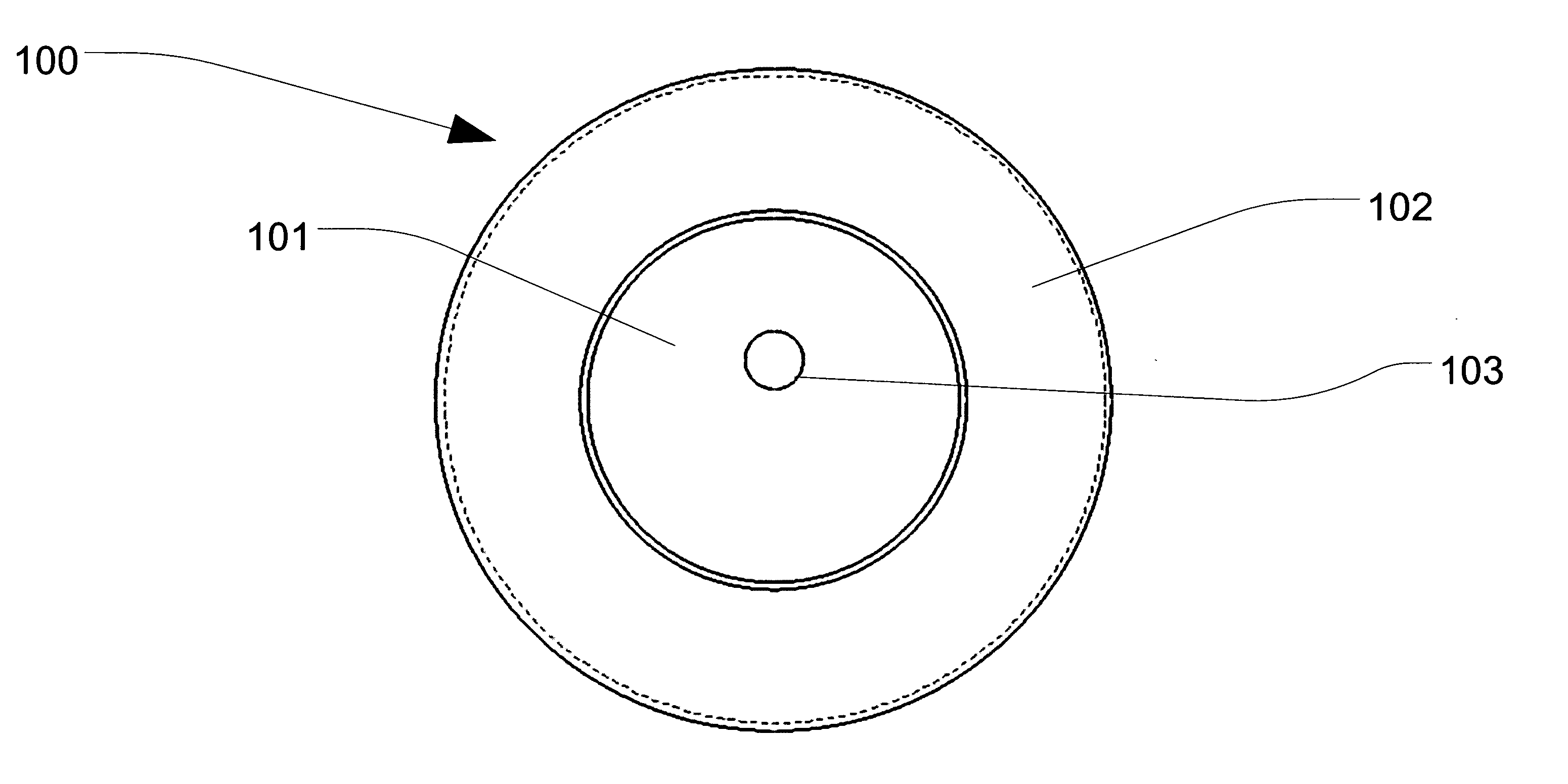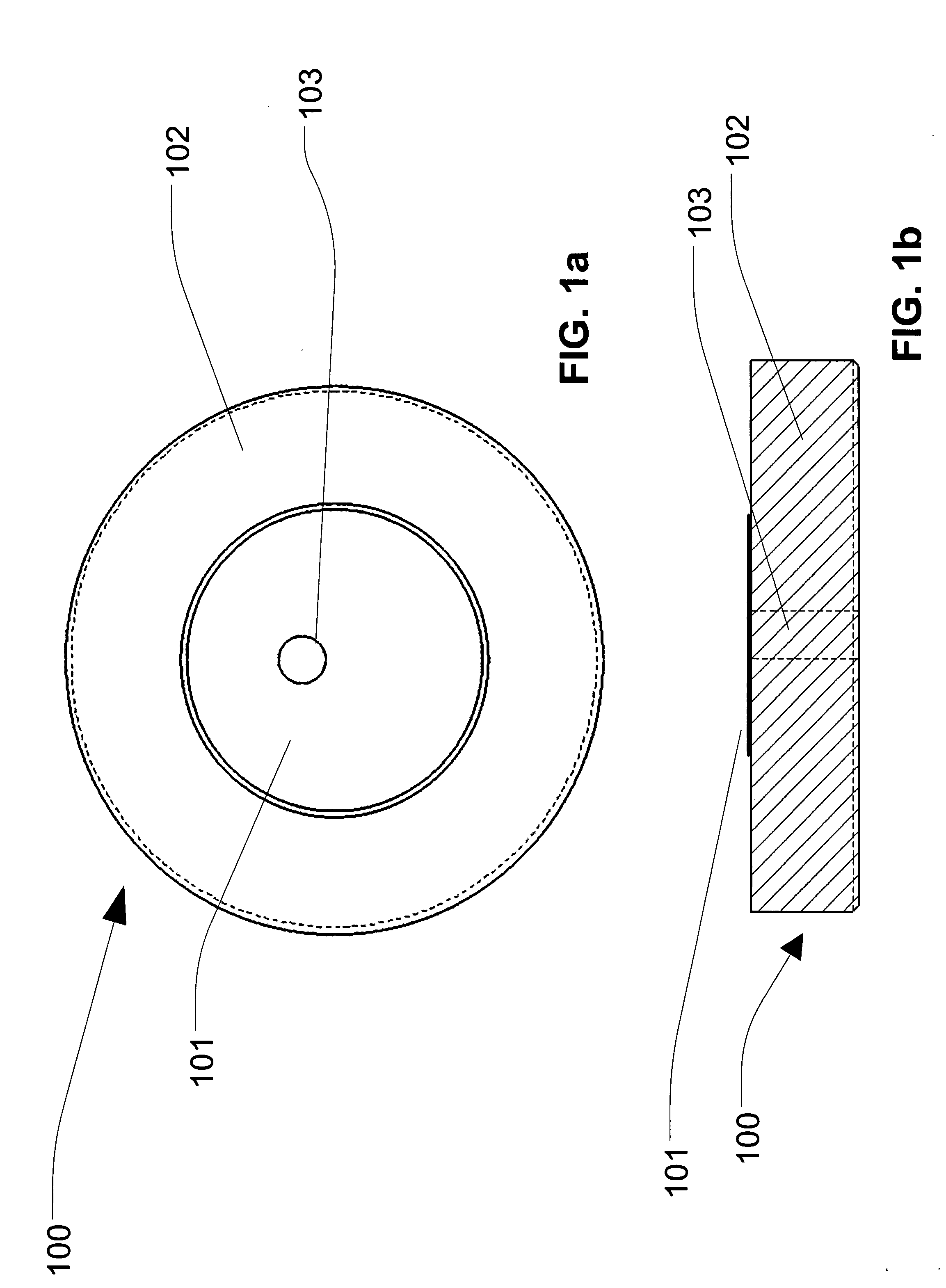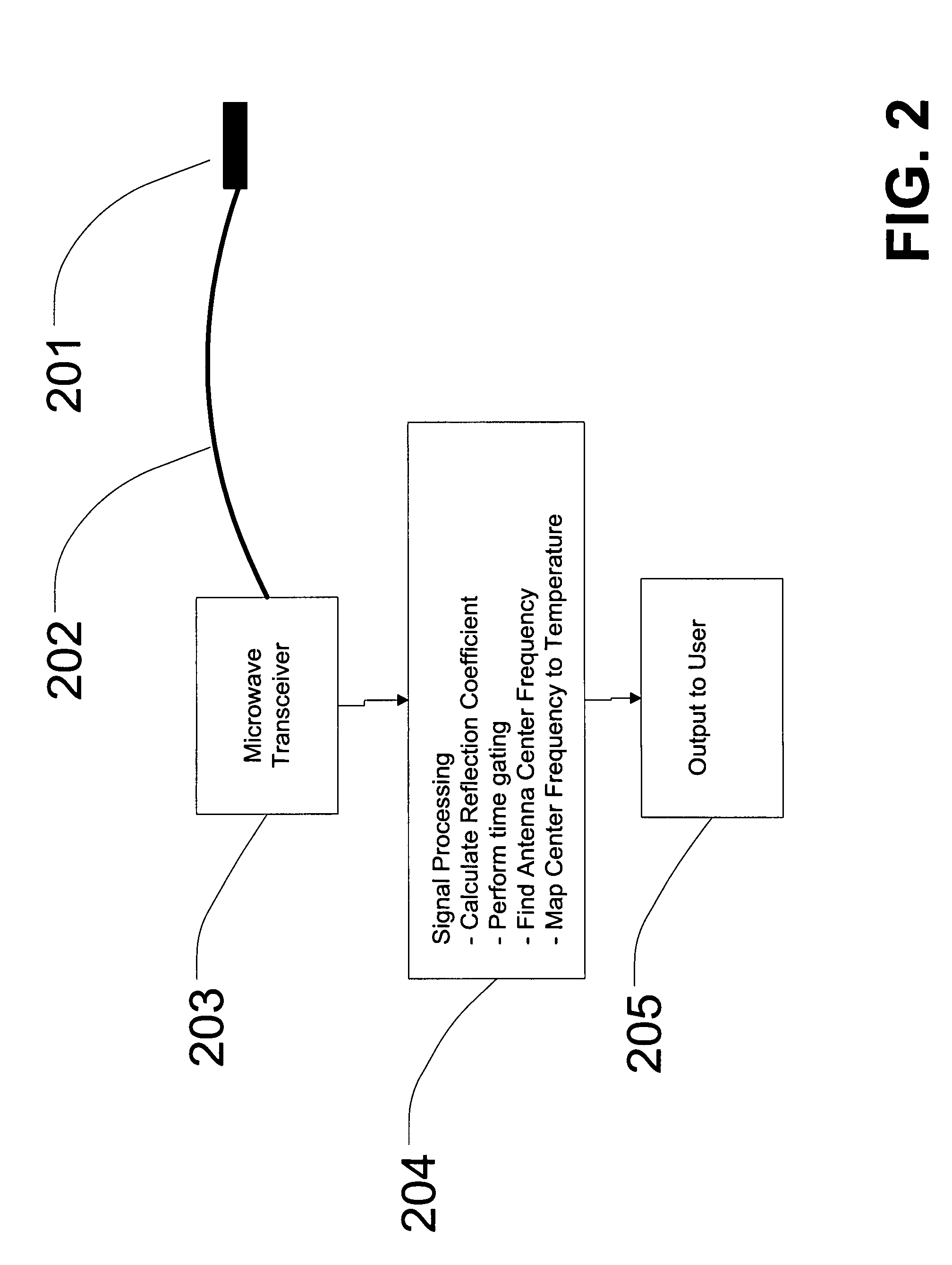Temperature measurement using changes in dielectric constant and associated resonance
- Summary
- Abstract
- Description
- Claims
- Application Information
AI Technical Summary
Benefits of technology
Problems solved by technology
Method used
Image
Examples
Embodiment Construction
[0024]Exemplary embodiments of the present invention provide for a method of measuring temperature by measuring the change in dielectric constant of an antenna having a dielectric material and a radiating element, typically a patch antenna, within a high temperature environment. For the purpose of this disclosure, a high temperature environment is defined by an environment having a temperature of or greater than 600° F.
[0025]Exemplary embodiments of the present invention will now be described more fully hereinafter with reference to FIGS. 1-5, in which embodiments of the invention are shown. FIG. 1a is the top view of an exemplary implementation of a patch antenna with metallization applied using a thick film or thin film process in accordance with one embodiment of the present invention. FIG. 1b is the side view of an exemplary implementation of a patch antenna with metallization applied using a thick film or thin film process in accordance with one embodiment of the present invent...
PUM
 Login to View More
Login to View More Abstract
Description
Claims
Application Information
 Login to View More
Login to View More - R&D
- Intellectual Property
- Life Sciences
- Materials
- Tech Scout
- Unparalleled Data Quality
- Higher Quality Content
- 60% Fewer Hallucinations
Browse by: Latest US Patents, China's latest patents, Technical Efficacy Thesaurus, Application Domain, Technology Topic, Popular Technical Reports.
© 2025 PatSnap. All rights reserved.Legal|Privacy policy|Modern Slavery Act Transparency Statement|Sitemap|About US| Contact US: help@patsnap.com



